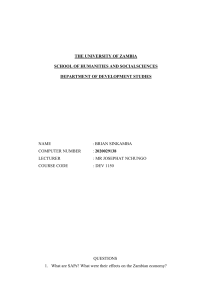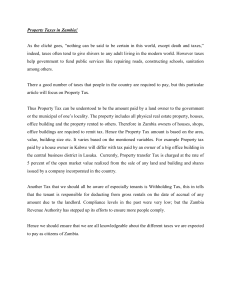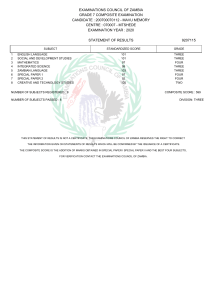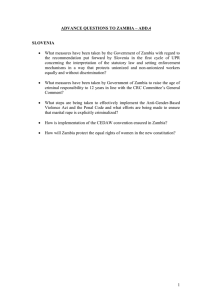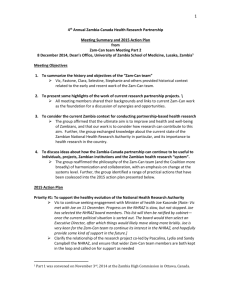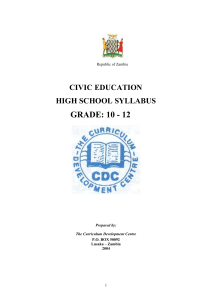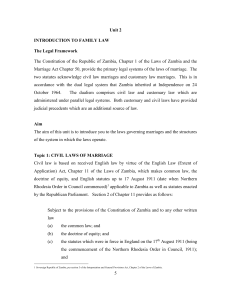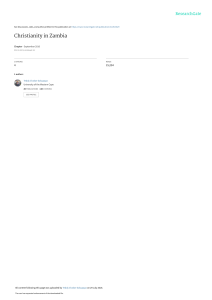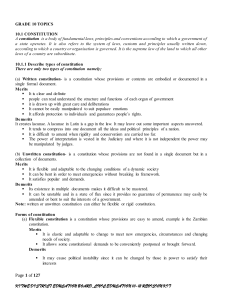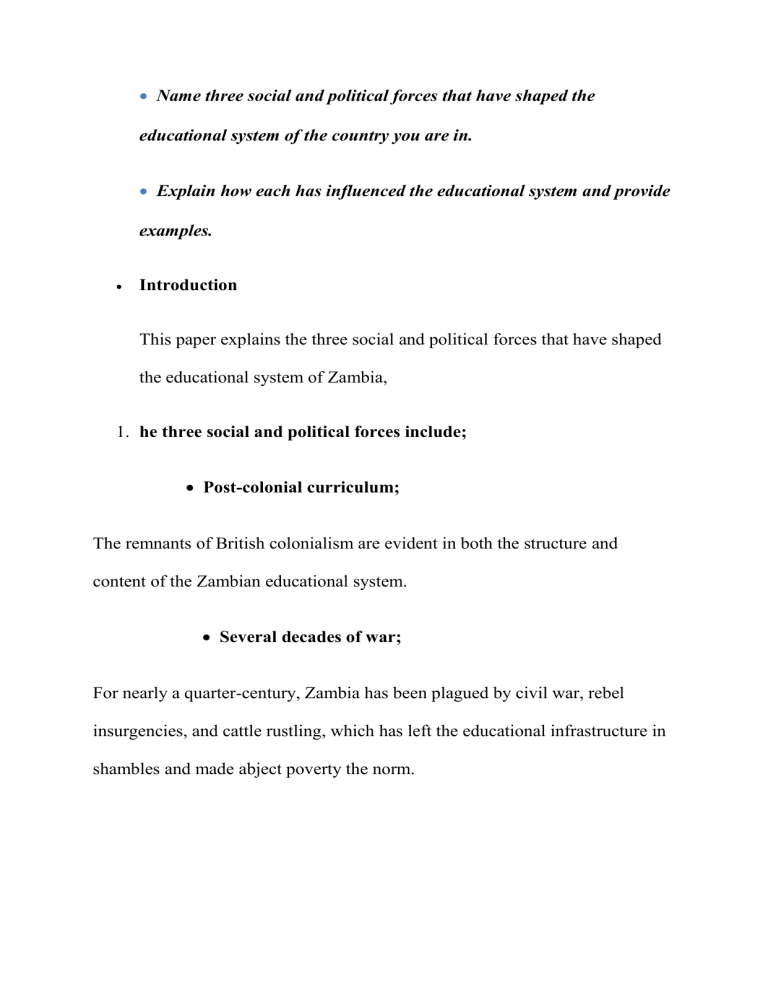
Name three social and political forces that have shaped the educational system of the country you are in. Explain how each has influenced the educational system and provide examples. Introduction This paper explains the three social and political forces that have shaped the educational system of Zambia, 1. he three social and political forces include; Post-colonial curriculum; The remnants of British colonialism are evident in both the structure and content of the Zambian educational system. Several decades of war; For nearly a quarter-century, Zambia has been plagued by civil war, rebel insurgencies, and cattle rustling, which has left the educational infrastructure in shambles and made abject poverty the norm. Poverty Zambians are attempting to rebuild their economic and educational infrastructure, reweave their social fabric, and acquire the human and political capital required to compete effectively on a national and international level in this social context. What impact each of these elements has had on Zambia's educational system. Zambian education is still structured in the same way it was during the colonial period. The majority of youngsters start school at the age of six. Most Zambian children are expected to attend primary school for seven years (P1–P7), with class sizes averaging around 80 students per teacher. All children are expected to sit for the Primary Leaving Examination at the end of primary school (P7), which they must "pass" in order to be eligible to attend secondary school. Ordinary (O-level) and advanced (A-level) secondary education are the two levels (A- level). O-level is a four-year schooling program (S1-S4) in which pupils study a wide range of co Students must sit for the Zambia Certificate Examination (ZCE) at the end of their O-levels, which will route them to an ALevel if they pass well. The A-level is a two-year program (S5-S6) that focuses on pupils' academic strengths in order to prepare them for post-secondary education. Several decades of war; For nearly a quarter-century, the area has been decimated by civil war and rebel insurgencies, which have left the educational system in shambles and made abject poverty the norm. Zambia has battled on many fronts since attaining independence in 1963. Zambians have proven to be extraordinarily tenacious in the face of recurrent wars and oppression. References: 1. Okoth, P.G. (1993). The creation of a dependent culture: The imperial school curriculum in Uganda. In Mangan, J.A. (Ed.) The Imperial curriculum: Racial images and education in the British colonial experience. New York: Routledge. 2. International Journal of Education. 2011, vol. 3, No. 1: E1
